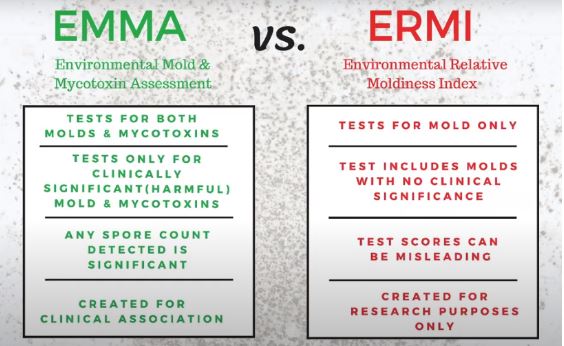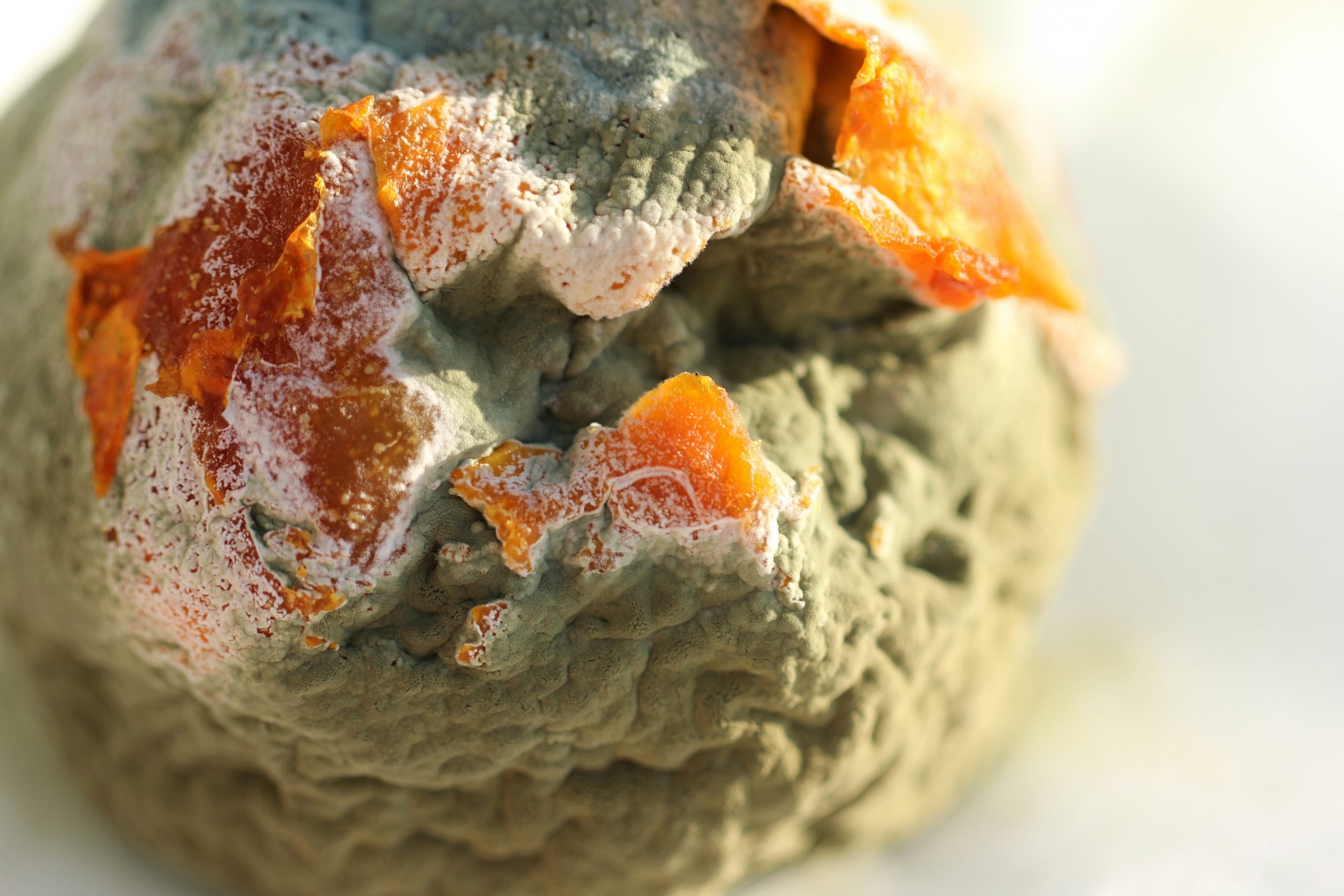What’s the difference between EMMA and ERMI?

What’s the difference between EMMA and ERMI?
Maybe EMMA and ERMI sound like children’s story characters, but no, we’re talking about mold testing! RealTime Laboratories was founded in Texas in 2005 by two doctors who had been researching and collaborating since their meeting in medical school. Dr. Bolton is a board-certified anesthesiologist and was a doctor with the U.S. Navy for 12 years, as well as practicing privately and with the U.S. Department of Veterans’ Affairs. He investigated the circumstances of his friend’s mother’s sudden death, whose heart stopped although she was in relatively good health. The woman’s house was full of mold. Dr. Bolton’s wife also suffered from sinus and ear problems, most likely from the gym where she worked out (nadallas.com) At RealTime Laboratories, Dr. Bolton and Dr. Hooper developed proprietary testing for the 16 most common, dangerous mycotoxins in patients’ bodies, homes and pets, so that they could recover their homes and lives from these poisons. EMMA (Environmental Mold and Mycotoxin Assessment) is one of these tests, and it tests for 10 of the most toxigenic molds (including “Black Mold” or Stachybotrys) as well as the presence of 16 of the most dangerous mycotoxins produced by those 10 molds, using provided swab and gauze or a sample of your HVAC filter. (realtimelab.com)
In contrast, ERMI (Environmental Readiness Moldiness Test) was developed by the EPA as a research tool, to investigate the relative moldiness of a home. ERMI uses the analysis of settled dust in homes and buildings to determine the concentrations of the DNA of the different species of molds. (survivingmold.com) In other words, ERMI gives a sense of the concentration of various molds, but does not test for the poisonous mycotoxins they emit. ERMI was developed as a research tool only, and although ERMI testing is widely available by independent labs, it has not been validated for routine public use in homes, schools or other buildings. It was criticized by the EPA’s own Office of Inpector General in a report titled, “Public May Be Making Indoor Mold Cleanup Decisions Based on EPA Tool Developed Only for Research Applications.” Some of the shortfalls of ERMI collection practices and analysis are listed in this report.
Here is a summary of the differences between EMMA and ERMI (source: presentation by Dr. Matt Pratt-Hyatt):

Realtime Laboratories is certified under Clinical Laboratory Improvement Amendments of 1988 (CLIA) and College of American Pathologists (CAP) to perform EMMA testing, which most importantly focuses on the molds AND the mycotoxins they produce. The company has produced a table of which mycotoxins are associated with which mold, and the symptoms and illnesses caused by them. Here is a portion of the table:

Mycotoxin testing in the body is what may be foremost to patients. This lab offers urine sample testing of those same 16 mycotoxins using ELISA-based testing, which stands for enzyme-linked immunoassay. It is a commonly used laboratory test to detect antibodies in the blood. (medlineplus.gov). (Inclusive in the mycotoxin test, RealTime Labs was granted a patent for its macrocyclic trichothecene test (tricothecenes can be produced by the molds Fusarium, Stachybotrys, Tricothecium and Myrothecium)). Also, RealTime Labs offers a MycoDART-PCR test of the blood (must be ordered by a doctor) to determine if the patient has been colonized by mold. According to Dr. Matt Pratt-Hyatt, 1 in 3 mold illness patients is colonized with mold. If detectable levels of mycotoxins are found:
In the body: the patient can choose to start treatment with a doctor in their area (list on the website). Treatment and monitoring continues until mycotoxins are below detectable limits in the tests.
In the home: the patient can contact environmental remediation services to pinpoint the source (the test does not pinpoint the source) and remove mold from their home.
Recovery from mold exposure and mold illness really needs to have this dual approach, because if the patient is treated without remediation of the home, then continued exposure will not allow recovery! Remediation of the home is great, but it could take much longer for the patient to recover if their natural defenses, like glutathione, remain depleted. Want to know whether you or your home have been “sickened” by mold? Get tested!
For the patient:
Mycotoxin testing by RealTime Labs: $399, by urine sample
For the home:
EMMA testing by RealTime Labs: $399 by dust swabs or air filter sample
Got Mold? Testing, $149-249 for 1-3 rooms

Photo by Sandy Millar on Unsplash






